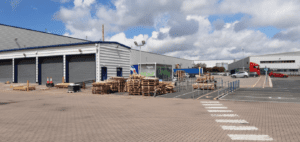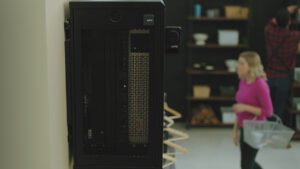Physical infrastructure failures adversely impact the operational efficiency of any manufacturing process. And when it comes to the internal infrastructure of a Life Sciences facility, operational effectiveness is critical. In this blog, I discuss the main contributors to the failure of physical infrastructure:
- Power outages such as blackouts and brownouts
- Data integrity
- Aging infrastructure
- IT interruptions
Power availability is the number one priority
The integrity of utilities and plant equipment in manufacturing facilities is vital, as is the power availability to these assets, which contributes largely to their lifespan. While minor power disruptions go unnoticed in our daily lives, momentary lapses of power continuity can greatly impact production.
An unreliable power supply can lead to momentary dropouts, brownouts, or complete failure and blackouts. Loss of sterility, long recovery times, and critical asset failure often results in significant product loss. According to REDICA systems, companies lose up to 10% of their turnover due to poor power quality.
Data integrity is driven by power availability
Power supply also supports data integrity, one of the key factors in maintaining physical infrastructure. In a highly regulated industry, quality control is fundamental, and the continuity of data capture is vital.
As much as data integrity is driven by power availability, properly managed IT equipment, which relies on power availability, can prevent potential server failures due to power quality issues. Across all networks, IT outages can mount rapidly – in some cases climbing to $300,000/hour – the cost of physical infrastructure failure can be substantial.
Aging infrastructure is a risk to continuity and efficiency
New physical infrastructure equipment is much more efficient than older equipment. For this reason, older technology is often synonymous with higher energy costs.
Let’s consider the example of an uninterruptible power supply (UPS). When comparing a modern UPS (at 96% efficiency) bearing the same load profile as a legacy UPS (at 88% efficiency) over ten years, the cost of losses (i.e., additional energy costs due to inefficiency) is nearly $400,000 more for the older UPS. When operating in eco-mode, some of the newest UPSs can attain efficiencies of up to 99%. Overall, Schneider Electric estimates that upgrading an aging data center can boost efficiency by as much as 67%.
Effective strategies must maintain critical infrastructure and ensure critical equipment doesn’t temporarily drop out or fail. Critical failure identification and examining their associations with other processes proves to be challenging in a traditional manufacturing environment. Pharmaceutical companies have difficulty maintaining infrastructure as modernization costs can be high, and replacing equipment can disrupt production due to required downtime.
Smart grids and automated technology boost resilience
With mounting global power demand and the strain on national utility grids, on- and off-site renewable energy can be used to supplement the grid. Once the infrastructure is in place, renewables provide a source of energy that helps meet sustainability targets while taking pressure off grids.
As companies look to revamp their physical infrastructures, simulation allows them to conduct real-time tests and gain insight without disruption. The use of digital twin technology to any degree – i.e., equipment, machine, building – is highly beneficial, enabling a range of real-time insights that can enhance:
- Quality
- Performance
- Productivity
- Energy efficiency
When used in conjunction with IoT plant and equipment data, static intel transforms into dynamic real-time simulations enhanced by intelligent live data.
Artificial intelligence, virtual reality, and augmented reality can also address the risks of physical infrastructure failure. Analytics advancements allow a shift from historical operational dashboards to real-time analysis – diagnosing and visualizing data from the plant without having physical contact with machinery, robots, or control enclosures through the industrial internet of things (IIoT) sensors.
With power availability central to the livelihood of physical infrastructure, adopting on- and off-site renewable energy is a sustainable solution. Remote management and innovative digital tools can integrate into one solution to diagnose and visualize plant data. Proper plant connectivity fuels the continuous flow of data. By looking to new and improved technologies, manufacturers can boost the operational efficiency of any process.
To learn more, access our Life Sciences website or download our new e-book, “Turning risks into opportunities for Life Sciences.”





Conversation
Thanks